What is the structure of the ER (Endoplasmic Reticulum)?
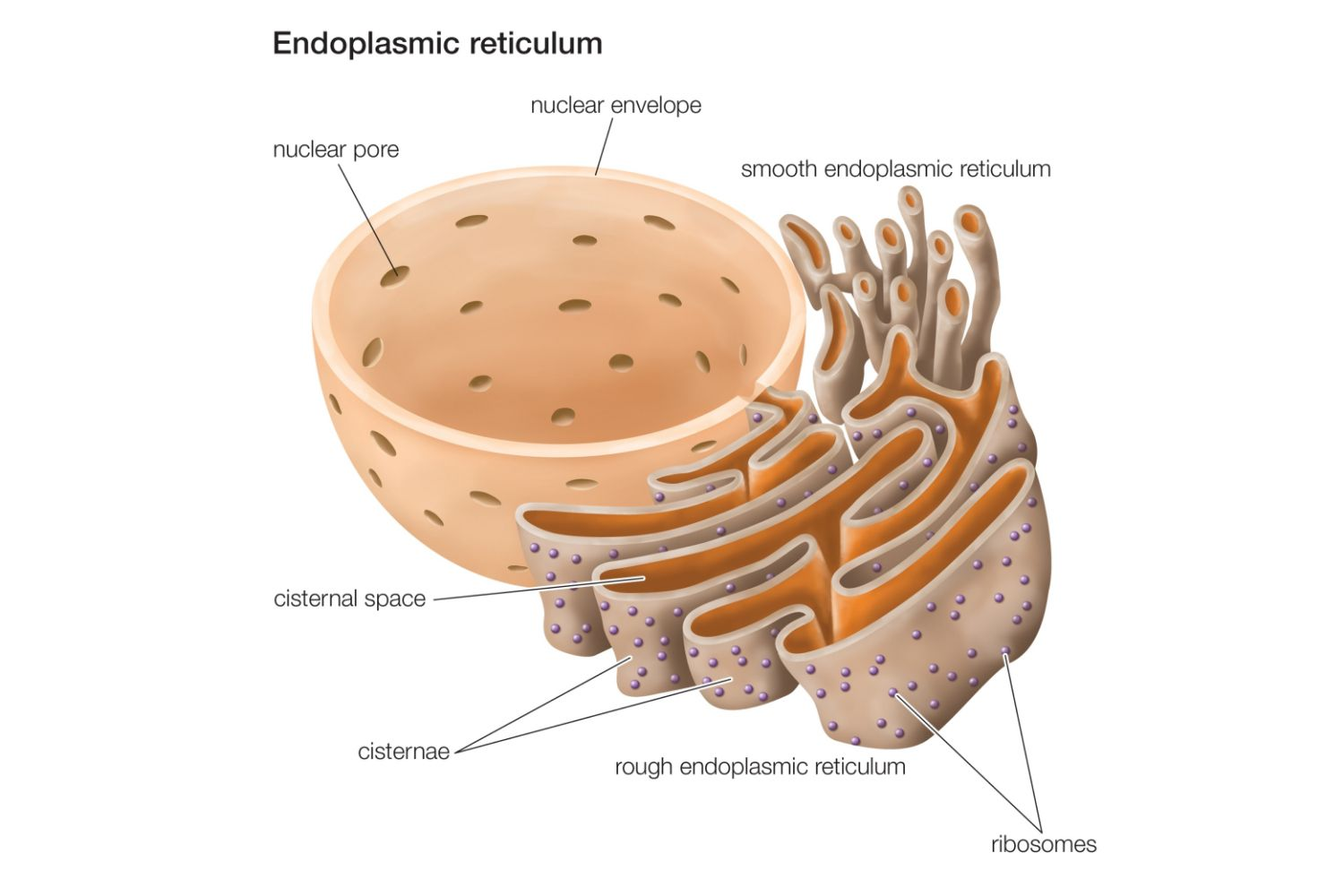
- Single-membrane compartment -continuous network of tubular and flat vesicular structures in the cytoplasm (“little net”).- Space inside is connected with the space between the two membrane surfaces of the nuclear membrane-continuous with the nuclear envelope.- Two parts with different functions: granular/rough ER (ribosomes attached for the translation and folding of new proteins) and agranular/smooth ER (synthesis of lipids and detoxification of certain drugs and toxins by cytochrome P450 enzymes)
What are the functions of the ER? (RER) (3)
- Protein synthesis- Glycosylation,
- Folding and assembly to form multi-protein complexes.
What are the functions of the ER? (SER) (3)
- Lipid synthesis (cholesterol, phospholipids). - Ca2+ sequestration (isolating something from its usual environment)- Detoxification by cytochrome P450 enzymes.
What are the differences between the RER and the SER?
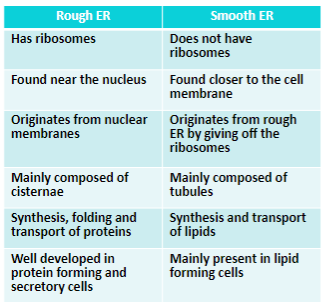
Where are newly synthesised lipids targeted to?
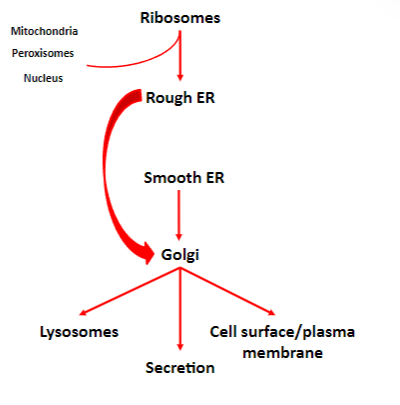
The ER, nucleus, mitochondria or peroxisomes
What are signal sequences?
Amino acids at the N-terminal end of the protein that are recognisedby enzyme systems within the cell that transport the protein to the correct destination.
Picture demonstrating protein synthesis and modification in both the ribosomes free in the cytosol and membrane bound ribosomes
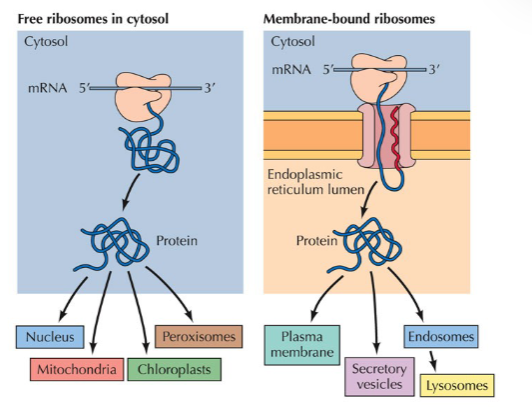
What are the four ways that proteins can be modified inside the RER?
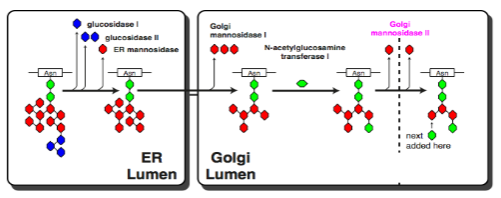
-Proteolysis (Signal Peptide)
-Disulfide bond formation)
-Glycosylation
-Deglycosylation
What is proteolysis? (process and purpose)
Proteolysis (Signal Peptide):
Process:
Removal of the signal peptide, a specific sequence at the N-terminal end of a polypeptide.
Typically occurs during or after translocation into the endoplasmic reticulum.
Purpose:
Signal peptide guides the protein to the ER; removal is necessary for the mature protein.
What is Disulfide bond formation? (process and purpose)
Disulfide Bond Formation:
Process:
Formation of covalent bonds (disulfide bonds) between cysteine residues in the polypeptide chain.
Facilitated by enzymes in the ER that catalyse the oxidation of cysteine residues.
Purpose:
Contributes to the stabilization and proper folding of the protein structure.
What is glycosylation? (process and purpose)
Glycosylation:
Process:
Addition of carbohydrate (sugar) groups to specific amino acid residues, often serine or threonine.
Enzymatic process involving the attachment of sugar moieties (refers to a functional group or a distinctive part of a molecule) to the protein.
Purpose:
Aids in protein folding, stability, and recognition.
Essential for proper targeting and function of glycoproteins.
What is deglycosylation? (process and purpose)
Deglycosylation:
Process:
Removal of previously added carbohydrate groups from glycoproteins.
Mediated by enzymes that cleave the glycosidic bonds between sugars and amino acids.
Purpose:
Regulatory process that can modulate protein function.
Necessary for recycling or degradation of certain glycoproteins.
What happens to proteins that fail any quality check?
Will not be exported from the ER and are degraded by ubiquitination and the proteasome
What does ERAD stand for?
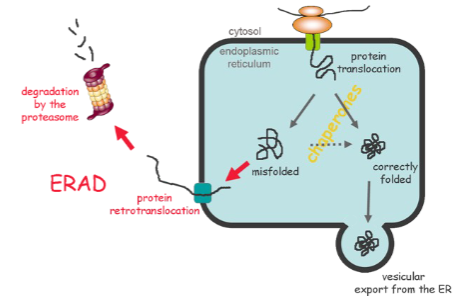
Endoplasmic-Reticulum-Associated protein degradation
What is the Structure of the Golgi apparatus?
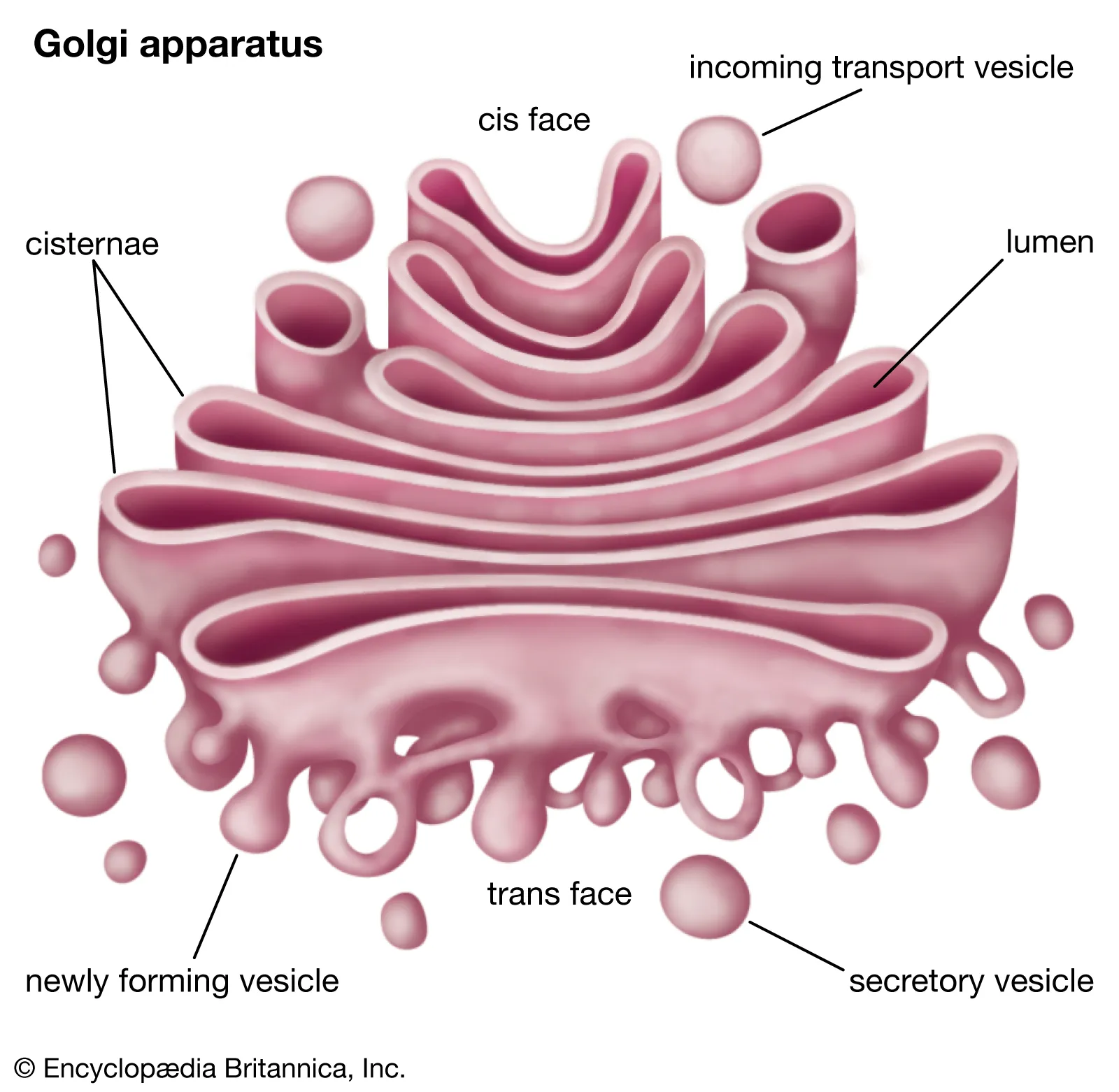
Structure of Golgi Apparatus:
Single-membrane compartment.
Consists of 4 to 8 stacked layers of thin, flat, enclosed vesicles called cisternae.
Cisternae lie near one side of the nucleus.
Compartments within Golgi Apparatus:
Three networks or compartments:
Cis Compartment:
First cisternae structure.
Located closer to the nucleus.
Medial Compartment:
Intermediate structures between cis and trans compartments.
Trans Compartment:
Final structure.
Located closer to the cell membrane.
What is the function of the Golgi apparatus? (5)
Protein Modification:
Addition or modification of carbohydrate moieties (refers to a functional group or a distinctive part of a molecule) to proteins.
Lipid Synthesis:
Synthesis of lipids, including sphingomyelin and glucosylceramide.
Protein and Lipid Sorting:
Directs proteins and lipids to specific cellular destinations.
Transport:
Vesicles transport proteins from one cisternae to another in the Golgi apparatus (cis to trans direction).
Maturation of Proteins:
Processes proteins received from the endoplasmic reticulum, modifying them into their mature forms
Picture of table outlining the functions of the Golgi apparatus:
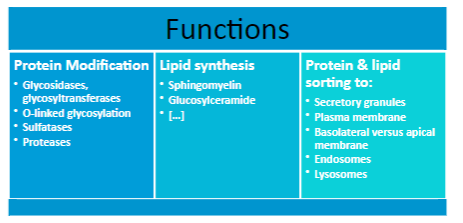
Vesicles transport proteins to and from...?(3)
• From the Golgi apparatus to lysosomes, the plasma membrane or theexterior.• From the plasma membrane to lysosomes.• From endosomes to the plasma membrane.
How is bud formation facilitated?
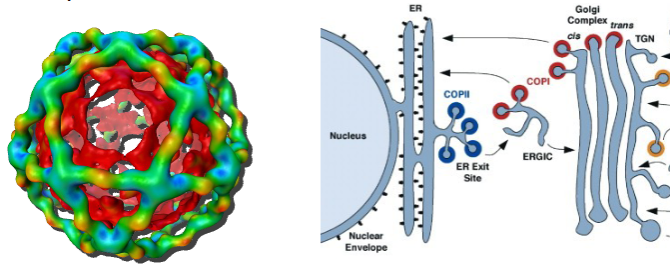
By the binding of different coat proteins (e.g. COPS).
What are the COPI and COPII proteins?
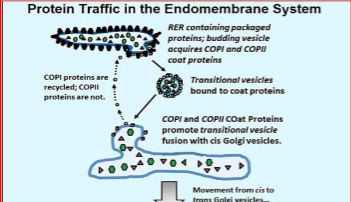
Are coat proteins that help packaged proteins bud off from RER
What do v-SNARES and t-SNARES do in the target membrane?
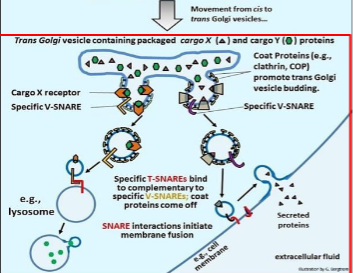
-V-SNARE binds to t-SNARE (target) in the target membrane
-The transport vesicle fuses to the target membrane and the cargo delivered.
A summary:
-Endoplasmic reticulum is a single-membrane compartment consisting of two differentiated parts-rough and smooth, which carry out different functions.- The synthesis, modification, folding and transport of the proteins takes place in the rough endoplasmic reticulum (and GA).- Proteins move to the Golgi apparatus-single membrane compartment- in vesicles.- As proteins move through the Golgi apparatus, glycosylation is modified.- Signal sequences direct proteins to ER (remember SRP cycle).- From the Golgi apparatus, proteins are directed in vesicles to the lysosomes or to the cell membrane, or they are secreted